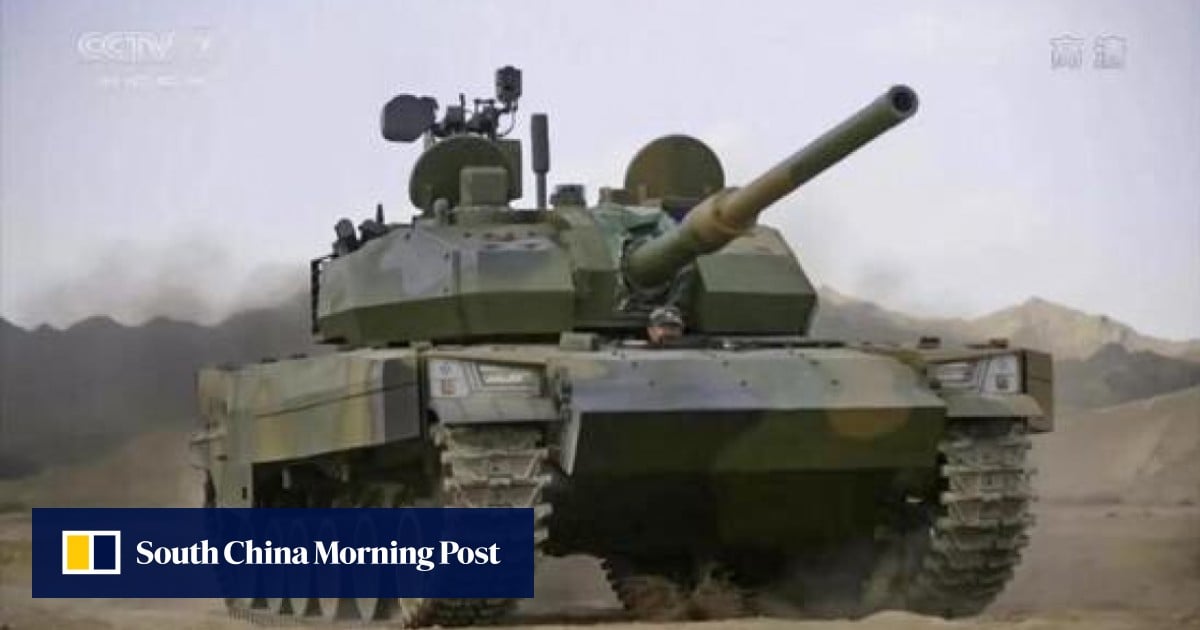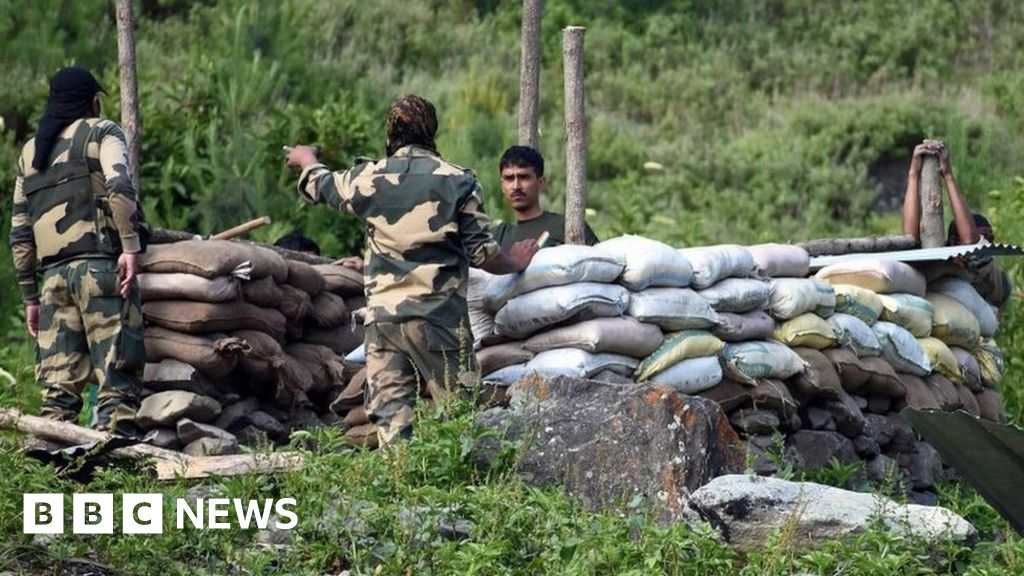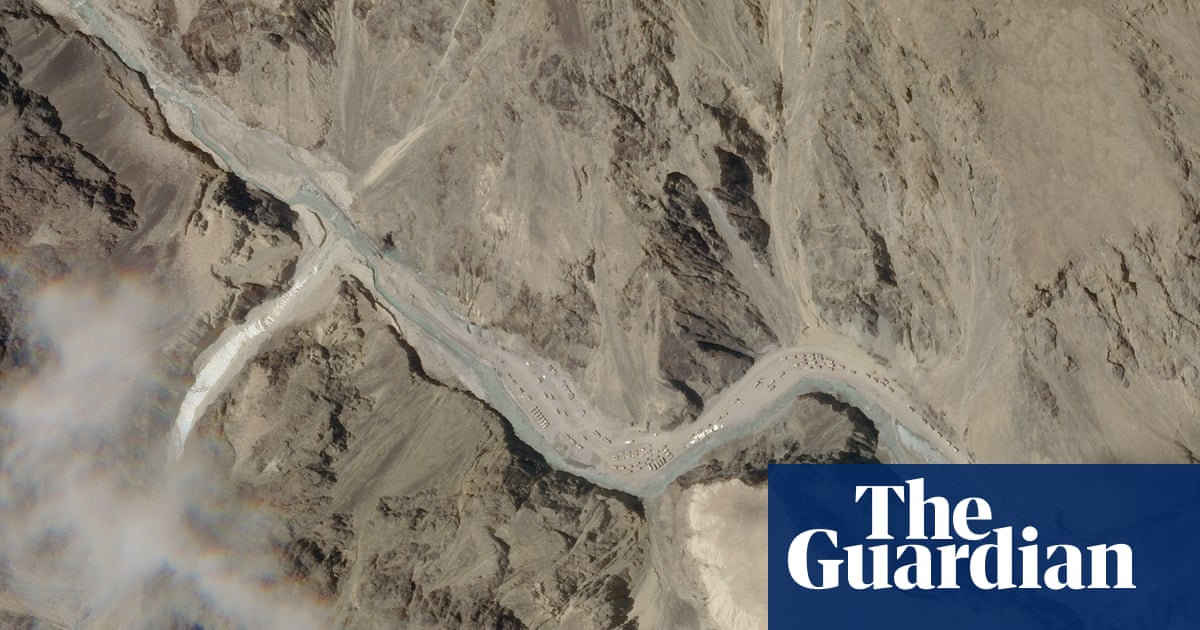https://qz.com/1114843/chinas-grand...o-divert-water-away-from-tibet/?utm_source=DGChina is working on an incredibly ambitious water diversion project involving the Brahmaputra, one of India’s largest rivers, which may become another point of tension between the two Asian neighbours.
Chinese engineers are testing techniques that could be used to build a 1,000-kilometre (km) tunnel—the world’s longest—to carry water from Tibet to Xinjiang, a barren region in northwest China, according to a report in the South China Morning Post (SCMP). The project would divert water from the Yarlung Tsangpo River in southern Tibet, which turns into the Brahmaputra once it enters India, to the Taklamakan desert in Xinjiang.
“The proposed tunnel, which would drop down from the world’s highest plateau in multiple sections connected by waterfalls, would ‘turn Xinjiang into California’,” the SCMP reported, quoting an anonymous geotechnical engineer. Xinjiang, China’s largest administrative division, comprises vast swathes of uninhabitable deserts and dry grasslands.
The feasibility of the proposed Tibet-Xinjiang project is being tested along a 600km tunnel in China’s Yunnan region.
“The water diversion project in central Yunnan is a demonstration project,” Zhang Chuanqing, a researcher at the Chinese Academy of Sciences’ Institute of Rock and Soil Mechanics, told the SCMP. Chuanqing, according to the newspaper, has played a key role in many major Chinese water tunnel projects. “It is to show we have the brains, muscle, and tools to build super-long tunnels in hazardous terrains, and the cost does not break the bank,” he said.
Install the app
How to install the app on iOS
Follow along with the video below to see how to install our site as a web app on your home screen.
Note: This feature may not be available in some browsers.
You are using an out of date browser. It may not display this or other websites correctly.
You should upgrade or use an alternative browser.
You should upgrade or use an alternative browser.
Bhutanin konflikti
- Viestiketjun aloittaja Tex
- Aloitus PVM
-
- Tagit
- intia kiina shittystan
http://www.terradaily.com/reports/Nepal_scraps_mega_hydropower_deal_with_Chinese_firm_999.htmlNepal has cancelled an agreement with a Chinese company to build the largest hydroelectric plant in the impoverished landlocked country, which suffers from chronic energy shortages. The project, agreed in June, would have nearly have doubled Nepal's current hydropower production and cost an estimated $2.5 billion. But the finance ministry recommended it be scrapped, saying it had been awarded without an open and transparent bidding process, according to letters seen by AFP on Tuesday.
Water-rich Nepal has a mountain river system that could make it an energy-producing powerhouse, but instead it imports much of its electricity from neighbouring India. Experts say it could be generating 83,000 megawatts, but its total installed generation capacity currently stands at less than two percent of that. Demand for electricity has long outstripped supply in Nepal due to chronic under-investment and inefficiencies in the power network. The result has been crippling for domestic industry and deterred foreign investment. Crucial infrastructure development has flagged in the years of political paralysis that followed the end of the Maoist insurgency in 2006 and the overthrow of the monarchy two years later.
CGGC is currently building three smaller hydropower plants in Nepal and has completed another one, though critics have complained that the projects have consistently run over time and over budget. Nepal's government is also currently building a 750 megawatt plant with China's backing. Meanwhile, construction of two large India-backed projects -- each with a price tag of over $1 billion -- is expected to begin next year after years of delays.
http://www.bbc.co.uk/news/world-asia-china-42261725An Indian drone has "invaded China's airspace and crashed" on its territory, Chinese state media said.
Zhang Shuili, deputy director of the western theatre combat bureau, said the incident took place in "recent days". He did not give an exact location.
He was quoted in Xinhua news agency as saying that India had "violated China's territorial sovereignty".
The Indian army said the drone had been deployed on a training mission and developed a technical problem.
Indian army spokesperson Colonel Aman Anand told reporters that they had lost control of the drone which then crossed into Chinese airspace. They alerted their Chinese counterparts soon after, he added.
The two countries saw relations worsen this summer when they became locked in a dispute over a Himalayan plateau.
Osasto 31
Kapteeni
Ja taistelu jatkuu vähän eri tavalla: https://www.hs.fi/ulkomaat/art-2000...60e995b52024bceb4cd0cbccddb638760e995b52024bc
Kommunistit ja maolaiset nousemassa johtoon Nepalissa – Vaalitulos kallistaa rajamaata kohti Kiinaa
HIMALAJAN vuoristossa sijaitsevassa Nepalissa pidetyissä vaaleissa on kommunistien ja maolaisten muodostama liittouma saamassa huomattavan vaalivoiton ja selkeän enemmistön parlamenttiin.
Viime torstaina pidettyjen vaalien on tarkoitus sinetöidä pitkä siirtymä kuningasvallasta demokratiaan Nepalissa, jonka sisällissota päättyi vuonna 2006. Vaalien pitäminen määrättiin perustuslaissa, joka hyväksyttiin vuonna 2015.
Nepal on yksi maailman köyhimmistä valtioista ja yksi Suomen merkittävimmistä kehitysapukohteista. Nepal on yhä toipumassa tuhoisasta maanjäristyksestä, joka vuonna 2015 surmasi yli 8 500 ihmistä.
SUNNUNTAI-iltana kommunistit eli yhdistyneet marxisti-leninistit olivat varmistaneet 68 parlamenttipaikkaa ja voittamassa lisäksi kilpailun 12 paikasta, kertoi Kathmandu Post -lehti. Heidän liittolaisensa maolaiset puolestaan olivat saaneet 26 paikkaa ja voittamassa yhdeksän.
Parlamenttipaikan sai esimerkiksi entinen pääministeri, kommunistienKhadga Prasad Oli, josta povataan seuraavaa pääministeriä.
Hallitseva puolue, keskustavasemmistolainen Nepalin kongressipuolue, oli sunnuntai-iltana saanut vain 14 paikkaa, joiden lisäksi se oli voittamassa kahdeksan.
Vaalitulos on vasta alustava. Lopullisen tuloksen saaminen kestää vielä useita päiviä, koska osa äänestyspaikoista on vaikeiden kulkuyhteyksien takana.
NEPALIN vaaleja on pidetty myös Kiinan ja Intian välisenä kilpailuna vaikutusvallasta. Nepal sijaitsee vuoristossa vanhojen kiistakumppanien Kiinan ja Intian välissä, ja kumpikin suurvalta haluaisi sananvaltaa rajamaassa.
Nepal on pitkään ollut paljolti riippuvainen Intiasta, jonka läpi valtaosa sen ulkomaankaupasta on kulkenut. Kommunistien ja maolaisten vaalivoiton on kuitenkin ennakoitu kallistavan vaakaa yhä enemmän Kiinan suuntaan.
Todennäköisellä seuraavalla pääministerillä Olilla tiedetään olevan hyvin läheiset suhteet Kiinan johtoon, kertoo intialainen sanomalehti Times of India. Kun Oli viimeksi oli pääministerinä vuonna 2016, hän solmi Kiinan kanssa kauttakulkusopimuksen, joka vähensi riippuvuutta Intiasta, kertoi Nepali Times -sanomalehti tuolloin.
Osasto 31
Kapteeni
Kummallista etteivät Intialaiset ole aloittaneet lentokenttien laajennuksia yms.
Otan tämän muistista, sillä en löydä kyseistä artikkelia (taisi olla Jamestownista):
Intian asevoimien sisällä on valloillaan niin kutsuttu "defensive mentality": Pelko infran joutumisesta kiinalaisten joukkojen käsiin. Intialle on siis muodostunut dilemma: ilman uutta infraa alue on erittäin vaikeakulkuinen molemmille maille, mutta Intian sotilaita ja materiaalia on hyvin vaikea saada liikutettua maan sisällä vaikka kiinalaisia hidastettaisiin. Uudella infralla sotilaita ja materiaalia taas saataisiin, mutta se olisi altis Kiinalaisten iskuille ja noin vittumaisessa paikassa hyvin vaikea korjata. Yhdistetään tähän, että Kiinalla on (oli?) alueellinen ylivoima ja parempi nopeus heidän rakennusprojektiensa kautta (+Tiibetin hallinta), niin puolustaja on varsin ikävässä ikävässä tilanteessa. Kiinan ei myöskään tarvitse välittää sisäpolitiikasta vaan mennään kun toveri Xi sanoo.
Intia tosin on jo vuosikymmeniä tapellut erinäisiä kahakoita vuoristoissa ja lisännyt vuoristojoukkojen määrää rajalla, joten PLA varsin kokemattomana organisaationa voi joutua varsin kusiseen paikkaan.
http://www.bbc.co.uk/news/world-asia-43655391With its scenic mountains and stunning Buddhist monasteries on hilltops, Bhutan is a traveller's dream and described by some as the last Shangri-La - a mystical beautiful place where everything is perfection.
The country's capital, Thimphu, is a refreshing delight to those who are tired of traffic and pollution in mega cities. The fresh air and the lush green mountains and snow peaks in the distance offer a visual treat.
Men, women and children calmly walk around in the country's traditional attire. It is probably the only country in the world where there are no traffic signals - just traffic police officers giving hand signals.
But beneath the surface, this picture-postcard country has been experiencing an undercurrent of tension and nervousness since last year.
Sandwiched between two Asian giants - China in the north and India in the south - the Himalayan nation, with a population of about 800,000, was anxious when troops from the two military powers squared up to each other over their border dispute.
The flare-up was in a strategic plateau called Doklam - situated in the tri-junction between India, Bhutan and China.
Bhutan is the only country in the region which has no formal diplomatic relations with Beijing.
There is also resentment among several Bhutanese who feel that India has been unfairly treating them in exploiting its natural resources. Delhi's "big brother" attitude, they say, could lead to people calling for more trade links with China. They point to Nepal playing the China card vis-à-vis its relations with India.
"For us, our future is with India. But we should forge a new kind of relationship which is equal between India and Bhutan. We have to look for new areas of engagement on equal footing," says Mr Acharya.
While India grapples with the challenge of a rising China, both militarily and economically, it is also in danger of losing its allies if its foreign policy is not based on mutual respect.
Bhutan may be a tiny Himalayan nation but it holds a strategic card. It does not want to be squeezed in India-China rivalry. The last thing they want to see is Chinese and Indian armies squaring up to each other once again near their border.
http://www.presstv.com/Detail/2018/06/17/565259/India-Kashmir-operationsIndia will resume military operations against armed groups in disputed Kashmir following the end of a rare 30-day suspension for Ramadan.
Indian Home Minister Rajnath Singh said in a post on Twitter that the New Dehli forces were being directed to take all necessary actions to prevent "militants" from launching attacks.
"While the security forces have displayed exemplary restraint during this period, the terrorists have continued with their attacks, on civilians and SFs (security forces), resulting in deaths and injuries," the minister said. "The security forces are being directed to take all necessary actions as earlier to prevent terrorists from launching attacks and indulging in violence."
Singh's office said in a separate statement on Twitter that the Indian government had decided "not to extend the suspension of operations."
The Indian minister also stated that the suspension had been ordered "in the interests of the peace-loving people" of Kashmir "to provide them a conductive atmosphere to observe Ramadan."
On Thursday, Indian Prime Minister Narendra Modi held a cabinet meeting to discuss whether to extend the initiative
Ei rajoitu vain Bhutanin lähistöön, mutta menköön tänne.
This month, about 150 troops from the two countries engaged in an aggressive brawl in Sikkim’s Nathu La pass, injuring a handful soldiers on both sides. Chinese and Indian soldiers have in recent days also faced off along the Pangong Lake on the sparsely populated Ladakh plateau.
The lake has been the frequent site of shouting matches, brawls and low-level confrontations between border patrols, who accuse each other of incursions into their own territory. Both India and China are said to be reinforcing positions in and around the lake and the Galwan Valley, where a river has long served as the line of control between the two countries.
FT: India and China trade accusations after Himalayan spats
This month, about 150 troops from the two countries engaged in an aggressive brawl in Sikkim’s Nathu La pass, injuring a handful soldiers on both sides. Chinese and Indian soldiers have in recent days also faced off along the Pangong Lake on the sparsely populated Ladakh plateau.
The lake has been the frequent site of shouting matches, brawls and low-level confrontations between border patrols, who accuse each other of incursions into their own territory. Both India and China are said to be reinforcing positions in and around the lake and the Galwan Valley, where a river has long served as the line of control between the two countries.
FT: India and China trade accusations after Himalayan spats
Ei rajoitu vain Bhutanin lähistöön, mutta menköön tänne.
Oli sama ongelma, mutta jätin postaamatta.
Tottahan toki Lontoon kirjeenvaihtajamme täytyy postata uutisia. Ei se niin tarkkaa ole.Oli sama ongelma, mutta jätin postaamatta.
Bloomberg: India and China Move In More Troops as Border Tensions Rise
India has moved additional troops along its northern border as it prepares for an extended conflict with neighbor China, after several rounds of talks failed to ease tensions between the nuclear-armed rivals.
China has already placed about 5,000 soldiers and armored vehicles within its side of the disputed border in the Ladakh region, an Indian government official said, asking not to be identified citing rules. India is adding a similar number of troops as well as artillery guns along the border to fend off the continuing incursions by Chinese army, the official said.
...
“The Chinese have been expanding presence in this region for a long time, yet after all these decades, India hasn’t found a way to deal with China’s gradual expansion,” said Phunchok Stobdan, former Indian diplomat and author of the Great Game in the Buddhist Himalayas. “The issue is why is China doing this and why now?”
India has moved additional troops along its northern border as it prepares for an extended conflict with neighbor China, after several rounds of talks failed to ease tensions between the nuclear-armed rivals.
China has already placed about 5,000 soldiers and armored vehicles within its side of the disputed border in the Ladakh region, an Indian government official said, asking not to be identified citing rules. India is adding a similar number of troops as well as artillery guns along the border to fend off the continuing incursions by Chinese army, the official said.
...
“The Chinese have been expanding presence in this region for a long time, yet after all these decades, India hasn’t found a way to deal with China’s gradual expansion,” said Phunchok Stobdan, former Indian diplomat and author of the Great Game in the Buddhist Himalayas. “The issue is why is China doing this and why now?”
Pihatonttu
Respected Leader
Tämä asia liittyy laajempaan alueeseen, mutta pannaan tänne.
Noin kolme miljardia ihmistä elää riippuvaisena vedestä, joka virtaa Himalajalta lähtöisin olevissa joissa.
Vesi on elämän lähde. Sen puute johtaa köyhyyteen ja kuolemaan. Joka hallitsee vettä, hallitsee kaikkea muutakin.
Kiinan pato-ohjelma on ollut jättimäinen. Missään ei lue, että se olisi päättymässä.
Naapurimaille voi tulla ikävät olot jos Kiina kaappaa voimaa käyttäen laajan alueellisen vesimonopolin.
Noin kolme miljardia ihmistä elää riippuvaisena vedestä, joka virtaa Himalajalta lähtöisin olevissa joissa.
Vesi on elämän lähde. Sen puute johtaa köyhyyteen ja kuolemaan. Joka hallitsee vettä, hallitsee kaikkea muutakin.
Kiinan pato-ohjelma on ollut jättimäinen. Missään ei lue, että se olisi päättymässä.
Naapurimaille voi tulla ikävät olot jos Kiina kaappaa voimaa käyttäen laajan alueellisen vesimonopolin.
The Indian army, too, has moved several battalions from an infantry division usually based in the Ladakh city of Leh, near the border, to “operational alert areas” along the frontier, and reinforcement troops have been brought in.
Hong Kong-based military expert Liang Guoliang said Beijing had deployed at least nine combined arms brigades – with specialities including mountain infantry, artillery, air defence, aviation, chemical and nuclear, and electronic warfare – to the Tibet Military Region, a PLA district dedicated to border disputes with India.

 www.scmp.com
www.scmp.com
Hong Kong-based military expert Liang Guoliang said Beijing had deployed at least nine combined arms brigades – with specialities including mountain infantry, artillery, air defence, aviation, chemical and nuclear, and electronic warfare – to the Tibet Military Region, a PLA district dedicated to border disputes with India.

China flexing military muscle in border dispute with India
Deployment of Chinese advanced weapon systems is designed to show India the PLA’s capability, expert says, as friction echoes 2017’s confrontation in Doklam.
Ainakin 20 sotilasta kuollut Intian ja Kiinan yhteenotossa Kashmirissa – Kiina syyttää Intiaa "provokatiivisista hyökkäyksistä"
Yhteenoton sanotaan tapahtuneen Intian ja Kiinan raja-alueella Himalajalla, jossa jännitteet ovat kasvaneet viime kuukausina.

India-China clash: 20 Indian troops killed in Ladakh fighting
It is the first deadly skirmish in decades between the two regional powers at their disputed border.
Viimeksi muokattu:
Uusimpien tietojen mukaan Intialaisia sotilaita kuollut ainakin 20.

 www.bbc.com
www.bbc.com

India-China clash: 20 Indian troops killed in Ladakh fighting
It is the first deadly skirmish in decades between the two regional powers at their disputed border.
The hand-to-hand combat lasted hours, on steep, jagged terrain, with iron bars, rocks and fists. Neither side carried guns. Most of the soldiers killed in the worst fighting between India and China in 60 years lost their footing or were knocked from the narrow Himalayan ridge, plunging to their deaths.
India has reacted with shock and caution to the loss of at least 20 soldiers on its disputed border with China, with images of the Chinese president, Xi Jinping, burned in Indian cities even as senior leaders including prime minister Narendra Modi had issued no public comment by Wednesday afternoon in Delhi.
A day after reports of the “violent face-off” in the western Himalayas emerged, Indian news outlets began naming some of the dead and a clearer picture started to build of what transpired on Monday night on the high, steep ridge lines above the fast-flowing Galwan River.

Soldiers fell to their deaths as India and China's troops fought with rocks
India shocked by Himalayan border clash in which unarmed troops fought in the dark
